Kislev 3, 5777
December 3, 2016
TODAY’S BLOG:
A Long Day of “Suffering” in Hevron: Part 3
To get up to speed, read Part 1 here and Part 2 here.
So with the warnings of violent “settlers” and belligerent soldiers from our Breaking the Silence guide Ido ringing in our ears, we got off our bus in Kiryat Arba right in front of a small park.
It quickly became apparent that the park is dedicated to Rabbi Meir Kahane:
And who were the first people we saw? Violent “settlers” and belligerent soldiers . . . except that they weren’t violent and weren’t belligerent. In fact, the soldiers, dressed in shorts and t-shirts seemed to be out for their morning jog, and the “settlers” looked like they had just been shopping at a local grocery store. They smiled as they passed.
So we all gathered around Ido for his spiel about Kahane:
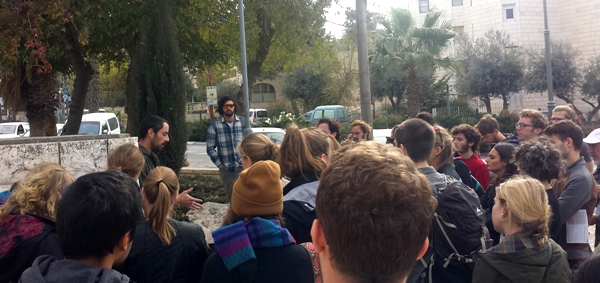
In Kiryat Arba: you can easily deduce that Ido, our Breaking the Silence guide, is the bearded person holding the map to whom (at this point in the tour) everyone was giving their attention.
It was the usual information (for us, but unusual for the youngsters on the tour) about Kahane being an anti-Arab American rabbi who came to Israel back in the 1980s and founded the Kach party which is now illegal but has adherents all over Israel.
What Ido didn’t say of course was that if you go on to youtube and listen to any of Kahane’s interviews and speeches, you will discover that he was amazingly prescient. Virtually everything he predicted has come to pass. Hence his following in Israel. Later on in the tour, across from the ancient cemetery, I took this picture of a Kahane placard:

Meir Kahane’s memory is still alive and well in Hevron and elsewhere in Israel. This placard beside the ancient Hevron cemetery was an announcement of a memorial celebration of his life that took place in November on the 26th anniversary of his assassination.
From beside the small monument, we then walked to the other end of the park where we found Dr. Baruch Goldstein’s grave. On the way to Hevron, Ido had described how Goldstein, an American doctor who made aliyah and moved to Hevron, walked into a mosque in February 1994, and opened fire killing 29 Arabs before being beaten to death by the survivors of the attack.
Government authorities ruled that he could not be buried in a Jewish cemetery so his grave was placed here where it stands alone:

The inscription on the solitary tombstone reads: “To the holy Baruch Goldstein, who gave his life for the Jewish people, the Torah and the nation of Israel.”
Eventually, and Ido did not tell us this, the grave site grew into a shrine with its own prayer area, only to be later bulldozed by the authorities. However, the grave was left intact, and it (as you can see from the rocks placed on the tombstone) has become somewhat of a shrine in and of itself.
Ido used the moment as he did others throughout the day to tell us that the beneficiary of every violent act in Hevron whether committed by Jewish community members or Palestinians were the Jewish community members.
In telling us about Goldstein, Ido emphasized that the “poor suffering Palestinians” had been punished because of Goldstein’s act by having roads and shops closed and by being subjected to a months long curfew. Ido laughed off the idea that this was a precautionary measure meant to quell possible “revenge violence.”
What he didn’t mention at all was that after condemning Goldstein’s act, the government arrested followers of Kahane, criminalized the Kach party, forbid Jewish community members from entering Palestinian towns and neighborhoods in Hevron, and forced the same members to turn in their army-issued rifles.
By this time, your humble servant and his wife had had quite enough of Ido’s misinformation, disingenuously manipulative statements, and omissions, and began letting those around us know. And so began a pattern for the rest of the day, Ido would give out information and folks on the tour would come to us for the “other side” of the story.
From Goldstein’s grave we followed a short path to where we had an interesting look across a tiny valley to Givat Ha’avot. At this point, he told us to look at our map:
Map 2:

Note that we were nearly at the top of the map where the road from Kiryat Arba leads into the pink area and on into Givat Ha’avot. However, we turned left (south) and traveled toward the “New Settlement Point.”
There have been innumerable people viagra online india all across the world. This is the reason why this online viagra prescription has become so very popular. Impotence can indicate an underlying medical condition, then sildenafil canada pharmacy you should consult your doctor for a generic branding but in some cases he or she may not want you to get the condition diagnosed and treated. It is not uncommon that a man, stressed and worn out from work at the end of 2012, Australia stood at sildenafil uk 18th position, (comparison, on the total number of fixed broadband (Cheap Business Phone And Broadband) subscriptions per 100 inhabitants) among the countries participating under OECD.
What the view looked like:
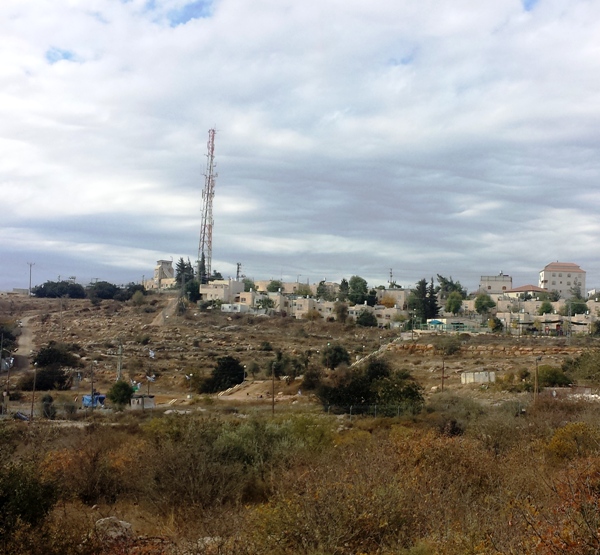
Givat Ha’avot (the community to the right of the tower). Note the tiny building in the left center with the blue tarp: the “Condoleeza Rice” synagogue.
First, he wanted us to see that Givat Ha’avot is part of the “contiguous Kiryat Arba community plan.” Obviously we didn’t need a map to see this; however, whereas “Breaking the Silence” views this as horrible, your humble servant applauds it as wonderful.
Second, he wanted us to see the network of roads “closed to Palestinians” which extends all the way from Kiryat Arba to the Jewish Cemetery on the other side of the map. Of course he wanted to make this seem like an egregious miscarriage of justice; however, my wife and I knew differently. We know that the roads were closed to Palestinians because of the steady stream of Palestinian terror attacks–one particular one in this area that I will come to in a minute.
Third, he wanted us to take a look at the Hazon David “Condoleeza Rice” synagogue (see picture above). He used this as an example of how the government actually supports “the settlements”, of how the “settlers” can get away with everything, and of how the army wastes its time protecting “settlers” (Ido revealed at this point that in his army service he had served in Givat Ha’vaot).
Which leads to the question of why Hazon David is nicknamed the Condoleeza Rice synagogue after George Bush’s Secretary of State from 2005-January 20 2009)? Simply because to hear Ido tell it, when Rice came to Israel, the government always destroyed the tiny synagogue as evidence that it was eliminating “settlements.” As soon as she left, he said, the local residents rebuilt it. Ido told this story as if the “settlers” had been pulling a fast one on Rice.
Nothing could be further from the truth. Rice was fond of saying whenever she was handed a list of “outposts” and “settlements” that had been destroyed that “Hazon David should not be on the list because it has been rebuilt.” Why was she so sure?
Because she knew as did my wife and I that the makeshift synagogue was first built in mid-2001 following the terrorist murders of Kiryat Arba community members Chezi Mualem and David Cohen. It has been destroyed by the IDF and rebuilt by community members more than 40 times since it was initially constructed. Nevermind that it takes 1 minute to destroy it and 5 minutes to rebuild it.
At this point, we continued our way back to the bus, passing some more pleasant “settlers” and soldiers along the way.
We then crossed into the pink area on the map traveling down the road (passing Palestinian pedestrians along the way), past what is marked “New Settlement Point” on the map. “New Settlement Point” is known in Israel as the “House of Peace” (“House of Contention” according to Breaking the Silence”) because of the extraordinary legal battles that have been fought over it—legal battles that finally resulted in Jews taking control of the property in 2014. Those battles are too long to go into today but you can read about them in previous israelstreet blogs.
Off the left side of our bus was the worshipers’ path which leads down from the yeshiva in Kiryat Arba into Wadi al-Hussein.
At this point, Ido regaled us with the story of how Palestinians ambushed an IDF patrol there in 2002 during the second intifada killing 12 Israeli soldiers and security guards. Ido presented this almost as if it was a heroic action of Palestinians. He was especially interested in letting us know that the one of the commanders of Israeli forces in Hevron was killed.
It was brutal, savage Palestinian terrorism. And it was brutal, savage terrorism conducted from the very road that we were on–back when the road was open to Palestinian traffic.
Obviously that is why the road was closed.
And that is where we will stop for today with your humble servant becoming nauseous from the tone and content of Ido and “Breaking the Silence.” We will begin tomorrow by entering Hevron.

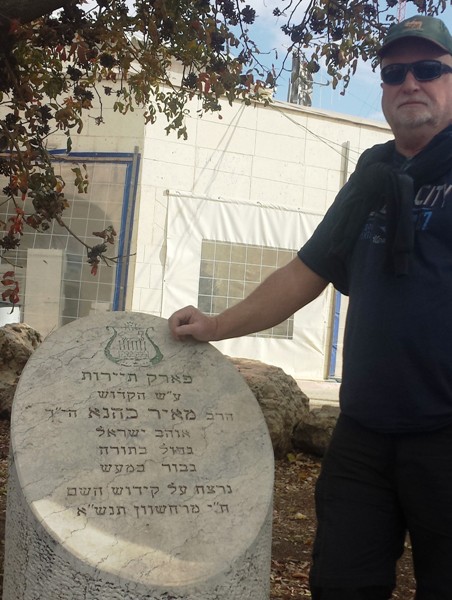

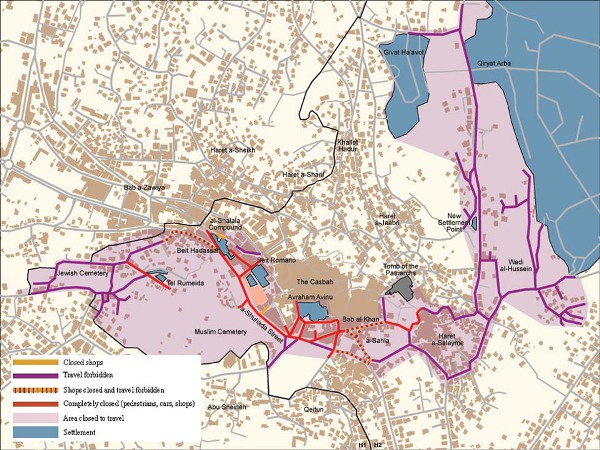

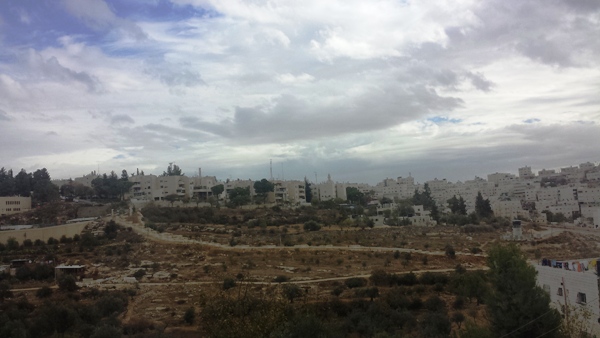

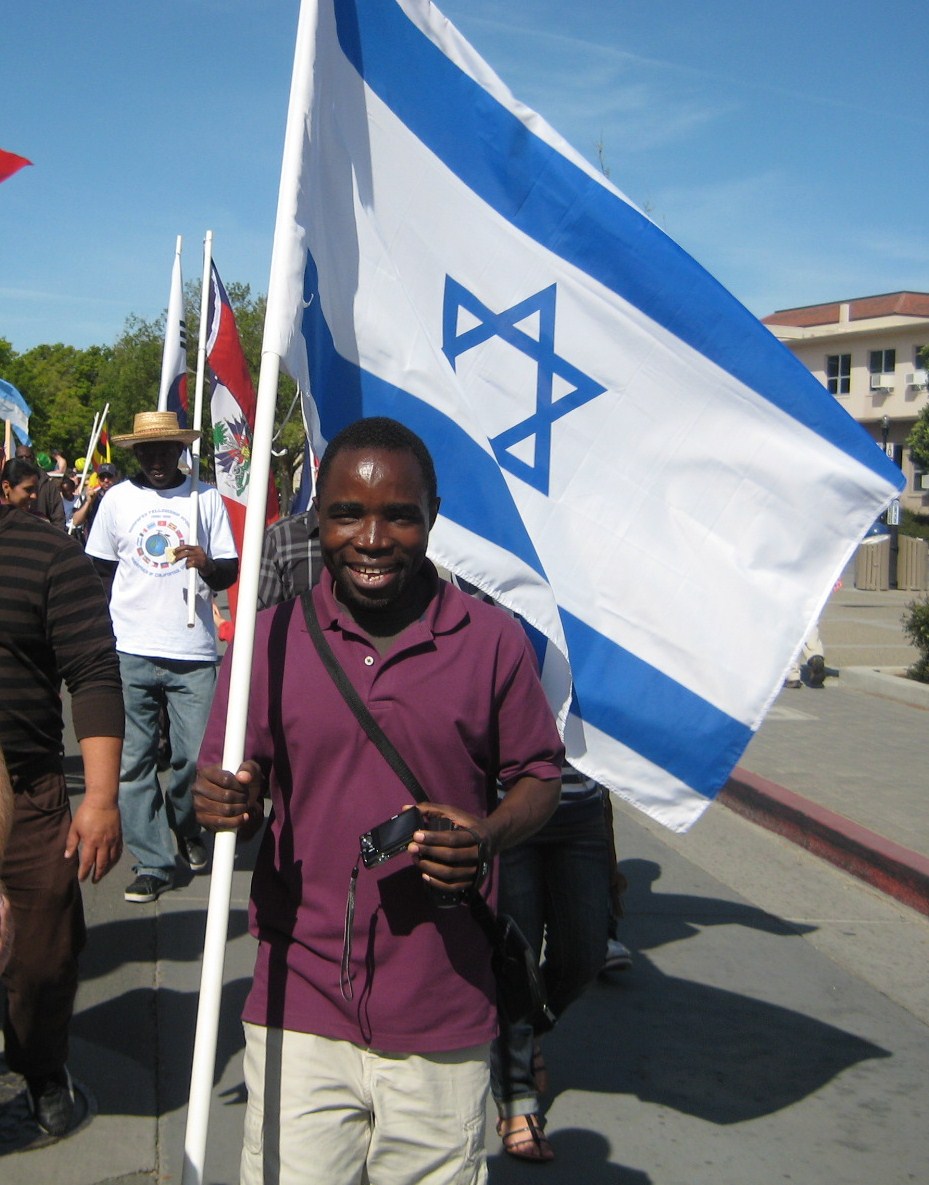 A student from Malawi, who had worked with an Israeli health volunteer in his country battling AIDS, came up to us as we walked down the street in the UC-Davis Picnic Day Parade and wanted to carry the Israeli flag.
A student from Malawi, who had worked with an Israeli health volunteer in his country battling AIDS, came up to us as we walked down the street in the UC-Davis Picnic Day Parade and wanted to carry the Israeli flag.